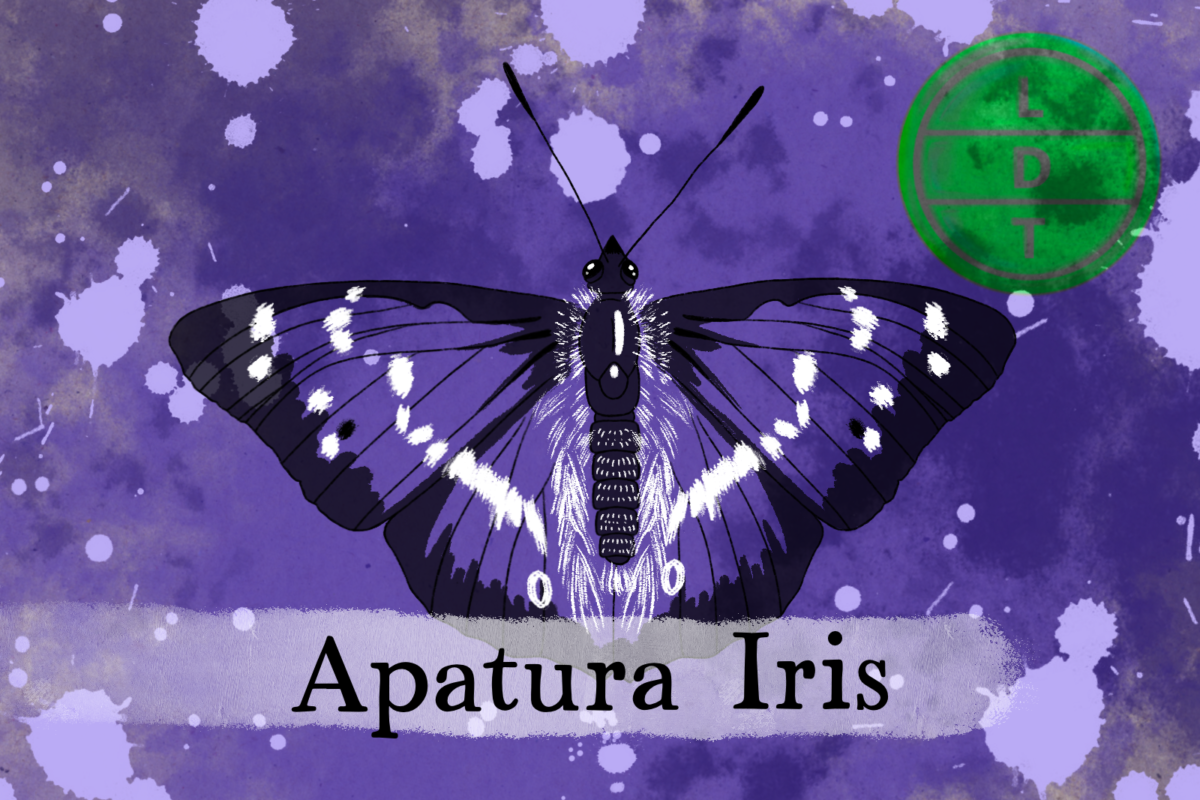“…and today we’re talking about something with a name that sounds like it could be a fish, bird, or flower. But more on that later…”
Butterflies are truly one of God’s gifts of nature. A creature that sports brilliant colors, flutters around gracefully, and dines only on the nectar provided by beautiful flowers. But there’s one butterfly that has more provocative tastes in cuisine. The Purple Emperor isn’t as devoted to its sweet tooth as its kin. With utter irony, the stink of death attracts a sheet of the insect’s indigo wings to descend. But the juxtaposition of beauty and decay is common in Life, Death, and Taxonomy.
Description of the Purple Emperor
- Mid-sized butterfly with dark brown wings mottled with white spots and bands.
- There is a small orange ring on each of the lower wings that look like eyes.
- Underneath, their wings have much bigger “eye” spots and larger white spots.
- Males have a purple iridescence that gives them their name.
- As caterpillars, they are green with white bands that mimic the veins on a leaf. They have two horns and are covered with tiny white “hairs.”
- The caterpillars turn brown in the winter.
Measure Up
Welcome to the beloved Measure Up segment. The official listener’s favorite part of the show! The part of the show when we present the animal’s size and dimension in relatable terms through a quiz that’s fun for the whole family. It’s also the part of the show that’s introduced by you when you send in audio of yourself saying, singing, or chittering the words Measure Up into ldtaxonomy at gmail dot com. We do have a new Measure Up intro from Nora and Lili.
Male Wingspan
- 70–80 millimeters (2.8–3.1 in)
- How many male butterfly wingspans go into the effective firing range of the M1 Garand?
- Hint: The M1 Garand was the premier semi-automatic rifle used by allied troops in WWII, and around 5.4 million were made for that conflict alone. It was a standard rifle in all branches of the U.S. military, in an age when the average German infantryman had a slower-firing bolt action rifle. The fact that the common soldier was equipped with more firepower than the common enemy made the Garand an excellent weapon in WWII. According to General George S. Patton, it was “the greatest battle implement ever devised.”
- 5,712.5 butterflies. The effective firing range of the Garand is 500 yd (457 m).
Female Wingspan
- 80–92 mm (3.6 inches)
- How many female purple emperors go into the length of the English longbow?
Hint: The english longbow was predominantly used in the Hundred Years War in the 14th and 15th centuries. Its long range (up to 1,000 yards) gave the English an advantage in ranged combat. Its draw weight was around 150 to 180 pounds. - 20 butterflies. The bow had an average length of around six feet (1.8 meters).
Fast Facts about the Purple Emperor
- Range: lives in woodlands with plants with broad leaves all across Europe and all the way east to China.
- Behavior: Females spend most of their lives in the tree canopy, favoring dense and mature oak woodlands, coming down only to lay their eggs on the small willow bushes that grow in clearings and bridleways. Males also spend much of their time in the treetops, defending their territory from rivals, though they will sometimes descend to drink from puddles or feed.
- They lay their eggs on sallow leaves in the late summer, which hatch soon after into caterpillars that will hang out in the midrib of the leaf, eating only at night until winter, when they change color to brown and hibernate in the branches. Once the next summer hits, they build a cocoon that looks just like a leaf to don the emperor’s new clothes and emerge as a butterfly.
Major Fact: Purple Putrid Eater
The purple emperor butterfly differs from other butterflies in that it does not obtain its nourishment from flowers or nectar.
Instead, it’s drawn to more pungent flavors, including:
- Honeydew secreted by aphids
- Sap oozing from oak trees
- Dung
- Urine
- Animal carcasses
It’s something of a mystery why these butterflies have diets more like house flies. Unlike flies, purple emperors have long tongue-like proboscises like other butterflies, rather than short straw-like tubes. When it finds its rotten meal, it will dab the long yellow tongue onto it, collecting nasty moist nutrients.
Butterfly watchers and photographers in the UK are avid hunters of a glimpse of these purple feces eaters, calling the male’s “his majesty.” Purple emperors are naturally elusive and spend most of their time high up in tree canopies, fighting with each other and drinking oak sap.
However, they will descend if they detect a pungent prize to eat, so photographers will bait the ground with all kinds of succulent meals, including:
- Shrimp paste
- Dirty diapers
- Dead fish
- Stinky cheese
- Old banana peels
- Dog poop
Some observers even collect roadkill to make a pleasing tribute to the Emperor. People have their own concoctions that they swear by, similar to fishermen with their favorite bait. For instance, some claim the best butterfly attractor is urine soaked fox feces–which seems as challenging to find as the butterfly itself. The butterflies also seem to like sweat, so they might land on the observers themselves.
As with many animals that eat weird things, like deer that chomp down on unsuspecting birds, the butterflies might be supplementing their normal diets with salt and minerals that they don’t get from high sugar oak sap.
There are many minerals available in feces and rotting flesh that aren’t in sugary saps, so the insect may associate powerful scents with special supplementary meals and flock to them while they have the chance.

